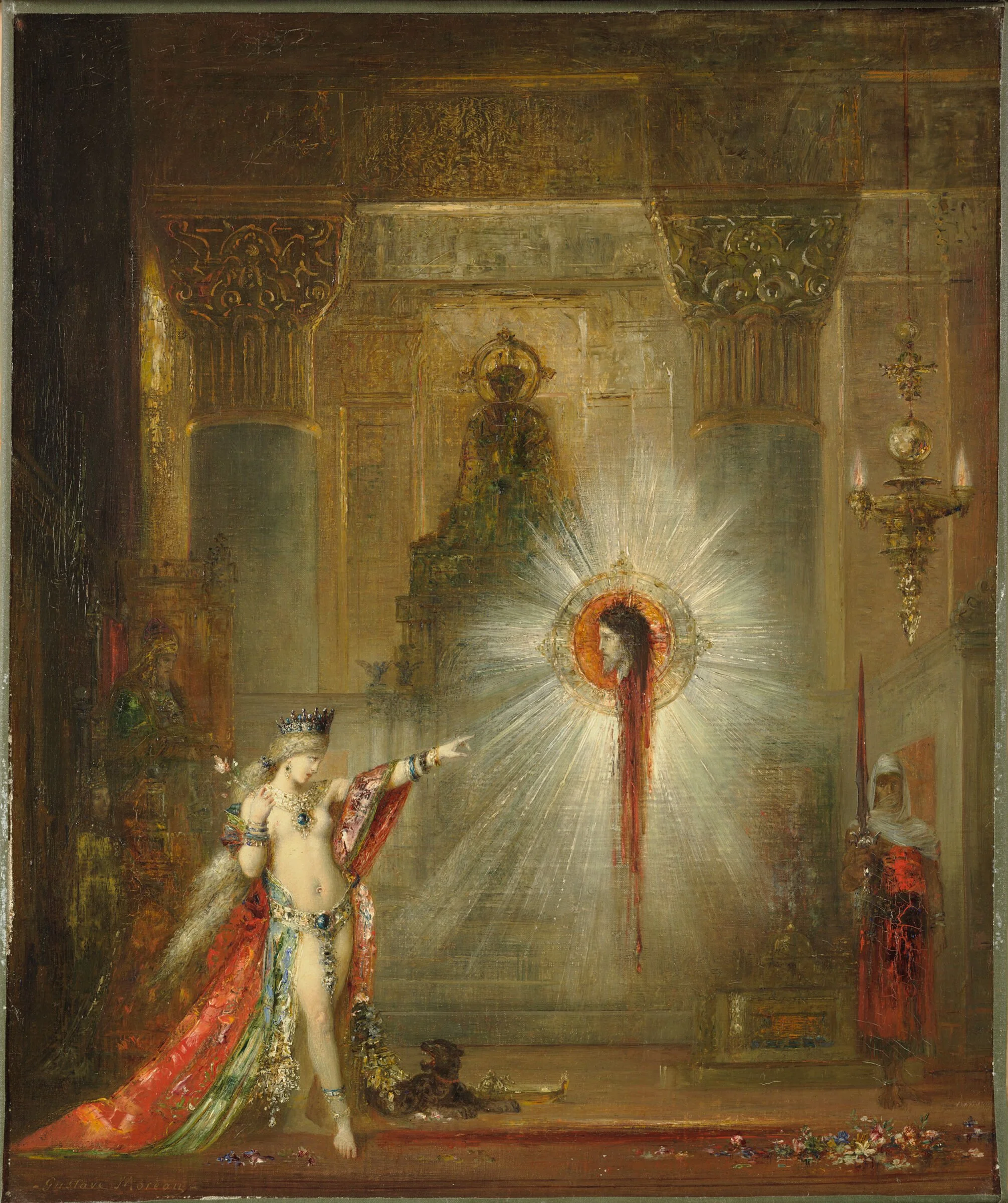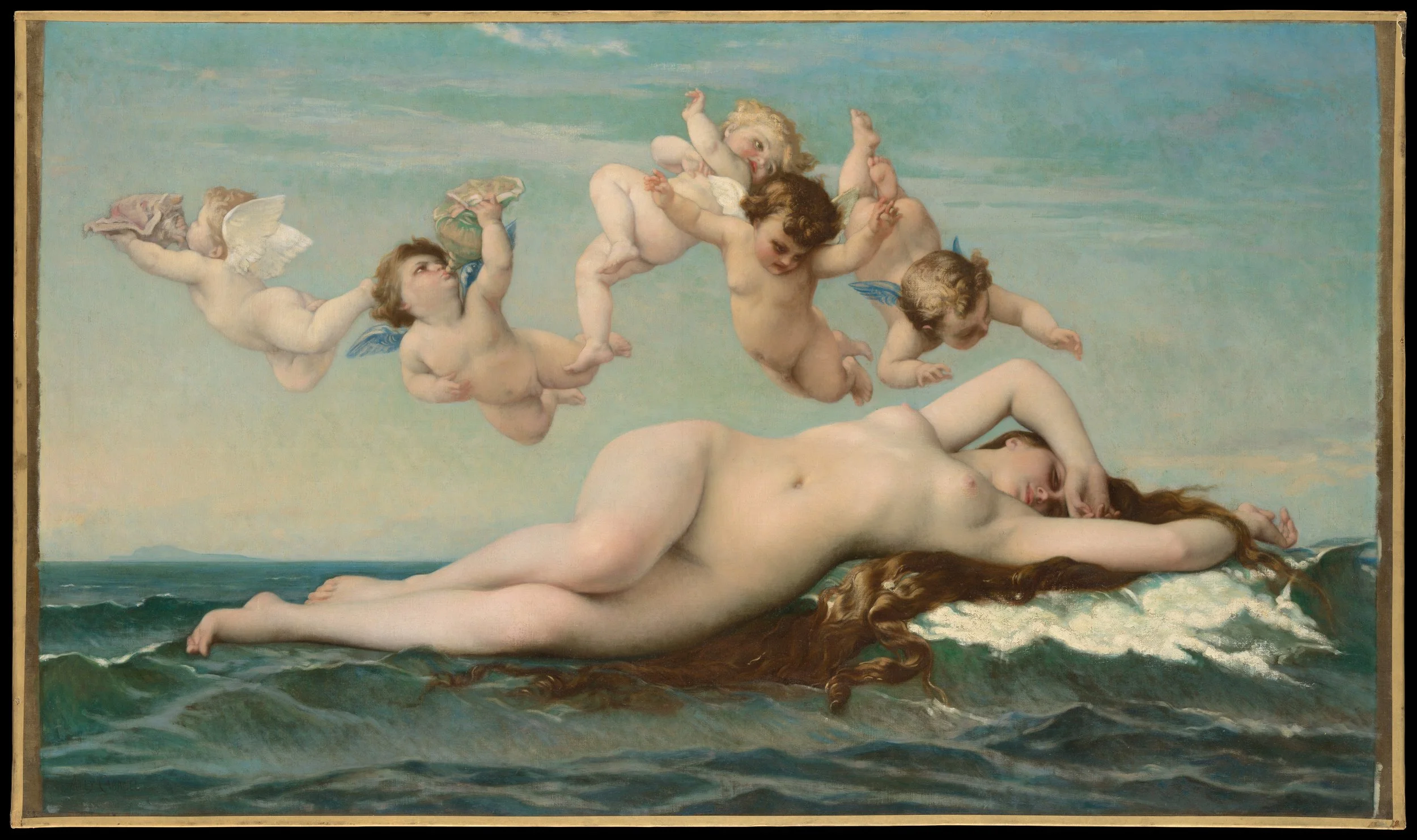Analyzing Ariel: Mermaid Imagery through the Ages
Mermaid mythos has infiltrated our curious minds for centuries, whether in more palatable forms like Disney’s “The Little Mermaid,” or the more sinister Hans Christian Andersen story ending in tragedy. Capturing the imaginations of artists and audiences alike, the mermaid has experienced a variety of depictions and evolutions in visual culture across time, often mimicking the ever-changing perception of women in society. What are the social mechanisms behind the depictions of mermaids that parallel how women were seen at the time, and why do they appear like this?
Lucille Chabot’s “Figurehead: Mermaid,” c. 1942. Image courtesy of the National Gallery, public domain.
The earliest iterations of mermaids existed as an intangible myth, often a result of oral histories passed down regarding the Syrian story of Atargatis, Celtic merrows, and Greek sirens. Even Christopher Columbus claimed to see a monstrous and grotesque water creature on his travels in 1492 (a description which could easily apply to the known manatee, but was turned into a game of visual telephone). This would be the first written record of what is also referred to as the sea cow, according to the Smithsonian, and not the last time the creatures would be confused with their more attractive counterparts.
Mermaids have been known as sirens, nereids, water nymphs, dryads, selkies, and more, but the earliest depiction of a mermaid in history, according to the Royal Museums of Greenwich, comes from a Norman chapel in Durham castle from 1078. The carving shows a mermaid figure alongside two leopards, symbolizing the temptations of the soul. In sailing folklore, mermaids were representative of both good fortune and disaster, a metaphor for the unpredictable and unruly nature of the sea, described as either a beautiful sea maiden who sings to sailors as they move on to the next life or a monstrous creature who drags sailors to their deaths. Mermaid figureheads would adorn the bow of ships as they were believed to appease the sea and control calm seas, but mapmakers would also use images of mermaids and other sea monsters to depict a particularly rough or unsafe area of the ocean.
Frederick Stuart Church, “The Mermaid,” 1881. Image courtesy of the National Gallery of Art, public domain.
We must look to common tropes used in the representation of women to better understand the role mermaids played in art and literature from the 18th century to the present day. Women were, and often still are, sanctioned to opposing sides of a madonna-whore complex, wherein this dichotomy “denotes polarized perceptions of women as either good, chaste, and pure Madonnas or as bad, promiscuous, and seductive whores.” Mermaids were categorized as either a threat or safety for sailors long before we could identify such a complex. They are often shown as being torn between two worlds- the world underwater and the world on land, but does this dichotomy extend even further? In mermaid imagery, their depiction often falls under one of two disparate categories- seductive temptress or helpless victim.
Gustave Moreau's "The Apparition," 1876-77. Image courtesy of Harvard Art Museums, public domain.
The seductive temptress aligns with labels like femme fatale and fallen women that appear in 19th century art, all of which culminate in showing the dangers of women weaponizing their sexuality. The Temptress does not appear as a threat to herself, but rather to the men that determine her fitness to be a wife and mother. Mermaids take on the same qualities, as those who seduce, become vindictive in their actions, and trick men with such calculated moves. The subsection of mermaids known as sirens are even characterized by their seductive singing, which was commonly considered incitement to lust by the Church, according to Jim Higgins, author of Irish Mermaids: Siren, Temptresses and their Symbolism in Art, Architecture and Folklore. Eventually this vocal seduction moved to a visual seduction, with the depiction of mermaid figures evolving into beautiful, provocative, and ultimately, vain creatures. Mermaids were shown gazing at themselves in a mirror, brushing their long hair, meant to display the efforts made to appeal to the men they would eventually destroy.
But when did taking care of oneself become an attempt to appeal to men specifically? Feminist theory has illuminated the idea that women who tend to their appearance are often labeled as doing it for men, so much so that these acts of personal care become an act of survival to navigate the standards of men that seemingly permeate all aspects of society. In times where women’s livelihood depended on economic propositions of marriage, men carefully crafted a narrative in which tending to one’s appearance was perceived as vain, but realistically necessary. Expected to be well-versed in the domestic sphere, women’s servitude was reserved for their husbands, and spending the same time on themselves would appear unnecessary. Women’s virtue was their most valuable currency, which was entirely dependent upon their ability to be pious, submissive, domestic characters. Much like how The Little Mermaid is meant to curb the young mermaid’s desires to explore, women’s interests and pursuits were discouraged by the overwhelming sense of obligation crafted by the cult of domesticity.
Women’s motherly roles are also featured in their artistic representation, directly conflicting with other assessments of womens’ places in society. In this sense, if women have adhered to societal standards of the time, they inhabit a more forgiving, understanding, and tame role of mother. Women, in being reduced to their reproductive value, are often painted with these qualities in mind. A sense of expectation is created, where a newfound purpose and identity emphasizes motherhood above all else. Royal Museums Greenwich tells us that in Slavic mythology, the mermaid actually signifies life and fertility, a stark contrast to the narrative where she is destructive and uncontrollable, much like the rough seas she lives within. But this isn’t the only time women are likened to the unpredictable nature of the sea. In the 19th century, amid scientific and medical discoveries surrounding womens’ bodies, public perceptions surrounding women underwent changes that impacted how women would come to be depicted in art. The process of menstruation was only beginning to be understood, and male artists used this as an opportunity to depict women’s mysterious and unknowable nature. Alexander Cabanel’s 1863 “The Birth of Venus” is an example of this, depicting the female nude through the mythological concept of Venus. Menstruation was commonly associated with the sea and its uncontrollable nature, equating such natural cycles to puzzling discoveries about the female body. Just like the ocean and its vast mysteries below the surface, women were seen as equally bewildering and inexplicable. Although Venus is an entirely different concept than mermaids, they take on a similar role as women in art.
The Birth of Venus, Alexandre Cabanel (French, 1823–1889 Paris), 1875. Image courtesy of Metropolitan Museum of Art, public domain.
These disparate identities of women who destruct versus women who create pit the two identities against each other, virtually ensuring women must fall under one category or the other. Kirsty Logan, author of The Gloaming, speaks to the male fear that inhabits the story of mermaids, that a woman will either leave you or destroy you. The Little Mermaid, with its Victorian origins, serves as a moral tale warning of young girls’ desires to explore and experience the world around them. Their autonomy becomes something to fear, whether it be parents, partners, or society that insist women remain innocent and pure by choosing not to act on their desires. The mermaid in Andersen’s tale is silenced, losing her voice in what is intended to be a sacrifice, but she rather surrenders her autonomy to achieve the transformation from mermaid to human. Logan points out “they’re afraid of the girls’ changing bodies, minds, and their ability to conceptualize sex, pleasure, and choice. None of this purity protection ‘saves’ these women.”
Bibliography
Fairclough, Caty. “From Mermaids to Manatees: The Myth and the Reality.” Smithsonian, May 11, 2023. https://ocean.si.edu/ocean-life/marine-mammals/mermaids-manatees-myth-and-reality.
Higgins, Jim. Irish mermaids: Sirens, Temptresses and their symbolism in art, architecture and Folklore. Galway, Ireland: Crow’s Rock Press, 1995.
King, Jason. “The Cult of Domesticity – America in Class – Resources for History & Literature Teachers from the National Humanities Center.” America in Class, February 26, 2021. https://americainclass.org/the-cult-of-domesticity/.
Shaw, Jennifer L. “The Figure of Venus: Rhetoric of the Ideal and the Salon of 1863.” Art History 14, no. 4 (1991): 540–70. https://doi.org/10.1111/j.1467-8365.1991.tb00457.x.
“The Madonna-Whore Dichotomy” American Psychological Association. Accessed August 10, 2023. https://psycnet.apa.org/record/2018-04940-001.
“What Is a Mermaid?” | Royal Museums Greenwich. Accessed August 10, 2023. https://www.rmg.co.uk/stories/topics/what-mermaid#:~:text=One%20of%20the%20earliest%20mermaid,top%20half%20in%20human%20form.




